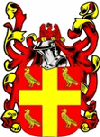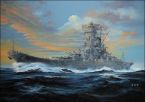rtrapasso
Posts: 22653
Joined: 9/3/2002
Status: offline

|
quote:
ORIGINAL: ChezDaJez
quote:
But most of those nuke bombardments are just screaming in on an enemy base. No spotters, no nothing. Just trying to get bearings on a landmark at night (moon or not) is tough.
Sorry, I gotta throw in with the nay-sayers on this one.
Actually, getting landmarks in the dead of night isn't that hard, moon or no moon. It's even easier if you have radar. Given that the date is early 43, it's possible that at least one ship had been upgraded with radar. And don't forget, Washing Machine Charlie didn't have much problem finding Henderson Field after flying a few hundred miles at night.
However, without radar, the Japanese tended use to either floatplanes dropping flares, so finding the target and ranging on it isn't that big a deal if the floatplane is calling the shots. If the ships are relying on starshell for illumination, then they must be in visual range of the target.
As far as the casualties incurred by this bombardment, I would not consider it out of line if a few hundred troops were killed. The Henderson bombardment of 13/14 Oct 42 saw 41 men killed and 2-3 times that many wounded. Many more would have been killed but the ships were firing AP shells which dug deep into the ground before exploding thereby minimizing casualties and damage.
If Castor Troy's bombardment had resulted in 12000 dead, then I would agree that it was way out of line. But given that the vast majorityof those 12000 were only disrupted. Most will be ready for action fairly quickly. The rest of the damage (airfield and aircraft) are well within reason for that level of bombardment.
I would like for Wolfpack to post a screen shot of the base just before the bombardment so that we can compare the 2 to get a more accurate picture of the casualties.
Anyways, no bones to pick. Just MHO.
Chez
The Henderson Field bombardment was mainly such a success because the IJN had a special spotter unit with a radio correcting fire on the airfield.
Compare this result to the very FEW other bombardments the IJN carried out without spotter units. Compare this result to the USN's frequent bombardment of Japanese bases from just after PH to the end of the war.
The ONLY time you had really effective naval gunfire is when someone was ashore spotting - not spotting from a float plane (although that was better than no spotting at all, but as far as i can determine that wasn't done at the Guad - see below).
As for "Washing Machine Charlie" - those were planes sent over to assure that the US troops didn't sleep, or not sleep well. Scouting was apparently sometimes done by "Louie the Louse" - cruiser floatplanes that would drop flares. They apparently were used to search out enemy shipping for the IJN to attack - i can not find any report of them actually using floatplanes to spot for artillery during the Guadalcanal campaign. The flares could also aid as a "pathfinder" and i think during Savo, they helped "backlight" Allied ships. If there is proof to the contrary (i.e. - actual reports from the IJN) that they were used otherwise (i.e. for naval gunfire spotting during the Guadalcanal campaign), i will stand corrected.
< Message edited by rtrapasso -- 1/22/2007 9:16:44 PM >
|
 Printable Version
Printable Version








 )
)





 Skill and training has alot to do with it, but as you say, the margin between excellence and raw recruit fades at the grunt level given the nature of the equipment and role.
Skill and training has alot to do with it, but as you say, the margin between excellence and raw recruit fades at the grunt level given the nature of the equipment and role. 







 New Messages
New Messages No New Messages
No New Messages Hot Topic w/ New Messages
Hot Topic w/ New Messages Hot Topic w/o New Messages
Hot Topic w/o New Messages Locked w/ New Messages
Locked w/ New Messages Locked w/o New Messages
Locked w/o New Messages Post New Thread
Post New Thread